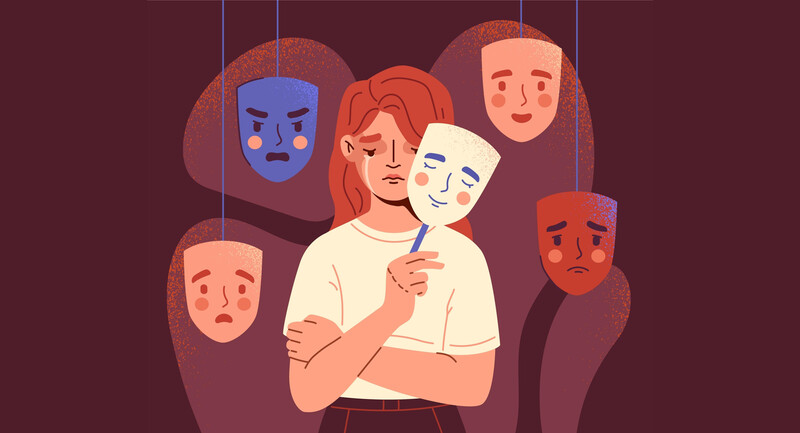It’s been seven years since the publication of “100 Repetitions” in the October 2012 issue of Educational Leadership magazine. 100 Repetitions was the phrase we developed in my school to “hang in” with students who carried all their struggles, pain, latent desire to learn, and enduring humanity with them every day. All schools have challenging students; so, I thought the notion of “100 repetitions” might be useful in all schools.
Years later, the article continues to be read for professional development, in PLCs, and in college and university programs. I still hear from readers that “100 Repetitions” provides them with comfort when they have helped a student through a tough day. Their struggles are never in vain. With those struggles come stories of success, often years later seeing a student in the supermarket who remembers that he or she was cared for at their lowest.
The article included six components of a good repetition. Each of them can be updated, as follows:
1. Preserve relationships.
Research and discoveries in the field of brain science have underscored a vital aspect of our work. Students learn when they feel secure, and our brains scan the environment for safety before allocating resources to new cognitive tasks. We now know that scores of students come to school with trauma histories; from both big events and from persistent neglect and abuse. Our resolve to treat every child on their worst day with exquisite respect is part of their healing process and part of their journey to recover their cognitive stability. We also know that the other students are keenly watching us manage their struggling peers. If we treat their peers with respect and not anger and fear, then their mirror neurons, which allow humans to feel the experience of another person, will register our respect. This is the foundation of community, and in turn, other students will feel safer with us and learn more.
2. Be genuine in your emotions.
The research is abundant: human memory is linked to and dependent on emotions. We are feeling beings who think. When my father-in-law was significantly impaired by dementia and could not remember events from day to day, he still felt his emotions. The most important aspect of caring for him was that each interaction was genuine. With a student who has had a hard day, the best and most emotionally genuine thing I’ve often said, “I do not know how to help you more. I wish I did.” Many students have said back to me, with calmness beyond their years, “I know.” That’s a good repetition.
3. Help the student accurately understand the consequences.
The development of restorative justice in schools has been a hugely significant sea-change in how we address behavior and simultaneously build our learning communities. In the past when students were non-compliant, we only had one big hammer in our toolkit—suspensions. We know now that suspensions often lead to more suspensions, with little investment by the school or the student to build understanding. Restorative justice asks not what rule was broken, but what harm must be repaired. That harm is often to relationships. Without relationships, there is limited learning. Schools that invest in restorative justice are seeing statistically significant decreases in aggressive behaviors and suspensions. The consequence of a suspension is a day off. The consequence with restorative justice is taking responsibility, making amends, and being pulled back into the community. That, too, is a good repetition.
4. Highlight every bit of growth.
There is no predictable sequence of learning for students who have been neglected, abused, bullied, and under-resourced. These students have jumped the rails from the typical arc of human development. The path forward is only what each of them can be supported to try. This approach dovetails with the revolutionary push for competency-based education and personalized learning; to see students in all subject areas as having unique readiness, and to recognize what each has learned and to find the next teachable skills. You start by saying, “This is what I see you are capable of now.” No brain is at step zero.
5. Listen to the student.
“100 Repetitions” was written as high-stakes testing became the norm. In fact, the current generation of new teachers may not have experienced schools in which their teachers were free from the shackles of mandated lessons, pacing guides, and relentless pressure to complete the curriculum before they administered the required pre-packaged tests. In my work in schools all over the country and especially in secondary schools, I hear teachers say, “Where can I get the time to talk to a student who has been sent out of the classroom?” This is so sad—and we must fight back. If your student is being escorted by support staff back to the classroom, plan ahead for that person to cover the class for two minutes—yes, a full 120 seconds!—so that you can ask the student, “How are you? Is there anything I need to know so today goes well? Please tell me.” You can also ask a school administrator to give you that time. Being listened to is a primary component of being connected and being connected is a primary component of learning in school. A good repetition that takes 120 seconds is a more efficient use of time than a repeat crisis that requires far more of your time and energy.
6. Let them feel their feelings.
Many readers are familiar with the scene from my book Hanging In: Strategies for Teaching the Students Who Challenge Us Most (ASCD, 2014), in which I sit on the floor in the hallway with a student who needs me to do that, and no more than that. Modern brain scanning makes clear that many struggling students have more rapid escalation of their flight, fight and freeze reaction to stress, and they take longer than other peers to return to a state of equilibrium. You don’t have to sit on the floor with a student to let them know that you see they are struggling. Offer them time and space to gain their composure: “If you need to put your head down for a couple of minutes, that’s okay.” A good repetition can precede and avoid a crisis.
To be clear, I am not a therapist. I am a teacher, a job title I am proud to proclaim. I love crafting lesson plans, setting up my room for success, greeting every student, and challenging every student to go a step beyond the limitations they place on themselves. I also know now—more than when “100 Repetitions” was first published—that chronic inequalities in access to health care, nutrition, justice, and economic opportunity means that we all will have students who are not the perfect models of competence and compliance.
There are no instant cures, no magic fixes. What remains is that I do my best for this child who is in front of me this day and create a good repetition on the path to mastery, whether this will be repetition number 40 or number 99.
I wanted to share select testimonials I’ve received in response to the publication of “100 Repetitions”:
At Alice Buffett Magnet Middle School, “100 Repetitions” has given our staff a new lens through which to look at how we interact with students who need a little extra attention and love. As we are on the path of “Pulling for 100,” colleagues can provide much-needed support and remind each other about the incredible influence we have on students with every useful repetition. Benson’s perspective on working with our most challenging students is a beautiful way to reframe how we think about our interactions with all people.
- Chelsea Krebs, Dean of Students, Alice Buffett Magnet Middle School
“100 Repetitions” has been cited and or read continuously in my workshops since I started facilitating work around change management, resilience, and hard conversations. It brings readers a sense of solace. They feel they are not alone in the challenge of doing the hard work and recognize that what they do matters deeply—even if they don’t see the final result. Personally, I am grateful to Jeffrey’s reminder that every repetition is critically important. His article has shaped my mindset around challenging experiences. I am ever grateful.
- Jennifer Abrams, Educational Consultant and author of several books including Having Hard Conversations
As a school community, we engaged in intensive study of the work of Jeffrey Benson around the need for resiliency in adults that can create solid relationships with students. His article “100 Repetitions”
permeated our discussions. We believed that each of us had to try and make a connection, and at some point, someone would be the 100th try that got the relationship going…We must believe in the power of the relationships, continue to strive for them, and never forget the power of 100 repetitions.
- Margy Jones-Carey, Assistant Professor and Educational Leadership Director, St. Bonaventure University
I reference the article “100 Repetitions” and concepts on a weekly or sometimes daily basis. The concept of needing 100 productive repetitions for mastery has given myself and many of my teachers the strength to continue on—even when all we see is the glimmer of progress. Remembering that it is a process to change behavior and to develop is comforting and allows us to do what we know is needed to support and empower students—even when it is hard!
- Charna Schubert, Early Childhood Director, Margolin Hebrew Academy
Jeffrey Benson has more than 40 years of experience as a teacher, mentor, and school administrator, with a focus on supporting schools that can work for all students. His books include Improve Every Lesson Plan with SEL, Hanging In: Strategies for Working with the Students Who Challenge Us Most, and 10 Steps for Managing Change in Schools: How do we take initiatives from goals to actions? His website is JeffreyBenson.org.








